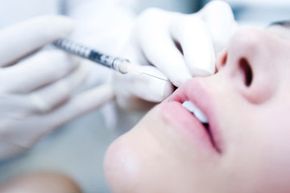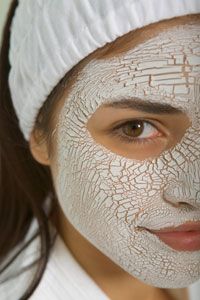Understandably, many people find the idea of having plastic surgery quite scary. But these days, there are many other ways you can rejuvenate your skin without actually going under the knife. Dermal fillers are one of the most popular, nonsurgical options for solving aging skin problems.
Dermal fillers, also known as "injectables" or "soft-tissue fillers," do just what their name suggests -- they fill in the area under the skin. Some fillers are natural and some are synthetic, but they all work to improve the appearance of aging skin in the following ways:
Advertisement
- filling in wrinkles, fine lines and deep creases
- improving other imperfections like scars
- filling out thin or wrinkled lips
- plumping up cheeks
- contouring the jaw line and other areas of the face [source: American Academy of Dermatology]
Dermal filler procedures are generally performed in a doctor's office on an outpatient basis. Depending on the type of filler you choose, your dermatologist may need to give you a skin test before the procedure, often to find out if you are allergic to the filler [source: American Academy of Dermatology]. During the actual procedure, the physician will give you a series of skin injections, the number and depth of which will depend on what you're trying to accomplish. Afterward, you can usually return to your regular routine right away, but your doctor may recommend that you stay out of the sun and avoid strenuous activities for at least a day [source: Plastic Surgery.com].
Before using a dermal filler, check on whether or not the product is FDA-approved. Anti-aging researchers churn out new products all the time, but the latest craze isn't always the best thing for you. In November 2008, the FDA posted an extensive list of approved dermal fillers -- along with their benefits and side effects -- on its Web site [source: FDA].
With all the different kinds of dermal fillers out there, choosing the right one can be overwhelming. Read on for some guidelines.
Advertisement


